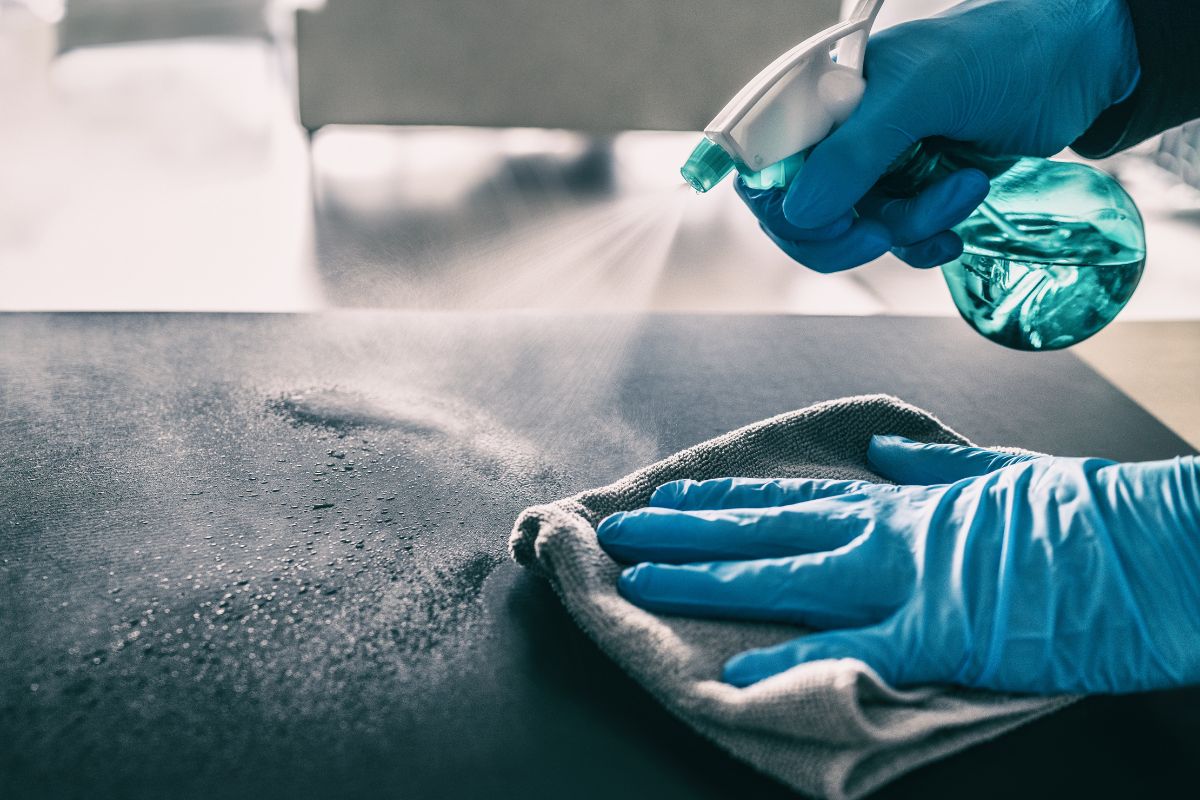Disinfectants play a pivotal role in upholding hygiene and safety standards by efficiently eliminating or deactivating an array of pathogens and microorganisms. This comprehensive exploration delves into the distinctive properties of potent disinfectants, their multifaceted applications across various environments, and the indispensable safety precautions associated with their utilization. A nuanced understanding of these factors is indispensable for judiciously selecting the most suitable disinfectant for specific needs and ensuring its optimal and secure application.
What Makes a Disinfectant Powerful?
A disinfectant’s efficacy hinges on its capability to obliterate a broad spectrum of microorganisms, encompassing bacteria, viruses, and fungi, coupled with the speed at which it achieves this task. Additional factors, such as the disinfectant’s concentration, the duration of its interaction with microbes, and the inherent resistance exhibited by the microorganisms, collectively contribute to determining its potency.
The Contenders: A Dive into Diverse Disinfecting Chemicals
-
Bleach (Sodium Hypochlorite)
Bleach stands as a stalwart in combating various viruses and bacteria, earning it a ubiquitous presence in households and medical facilities alike. Its affordability and rapid action make it a popular choice, albeit with the caveat of potential corrosiveness and dangers if not handled with care.
-
Hydrogen Peroxide
Hydrogen peroxide, effective even at lower concentrations, is considered a less harmful alternative to bleach. However, its efficacy against specific microorganisms may be comparatively subdued.
-
Alcohols (Ethanol and Isopropanol)
Solutions containing 60-90% ethanol or isopropanol emerge as formidable contenders, proficiently eliminating a wide spectrum of microbes. Their effectiveness finds application in hand sanitizers and surface disinfectants, notwithstanding potential surface dryness.
-
Quaternary Ammonium Compounds
Frequently integrated into disinfectant formulations, quaternary ammonium compounds exhibit prowess in eradicating a diverse range of pathogens. Their appeal lies in being less corrosive compared to other disinfectants, enhancing their versatility in varied applications.
-
Phenolic Compounds
Widely utilized in disinfectants, phenolic compounds demonstrate proficiency in bacteria and virus eradication. However, caution is warranted, as they can veer into toxicity when used in elevated concentrations.
The Most Powerful: Bleach Unveiled
Bleach, synonymous with sodium hypochlorite, reigns supreme as the most potent disinfectant owing to its raw disinfecting strength. Its mechanism involves a targeted assault on microorganisms’ proteins, culminating in their ultimate demise.
Applications and Safety Measures for Bleach
Bleach finds applications in diverse settings, including homes, hospitals, and water treatment facilities. Its corrosive nature necessitates scrupulous handling to avert skin and respiratory irritation. Additionally, the cardinal rule remains: avoid amalgamating bleach with ammonia or acids, as such combinations can lead to the release of harmful gases.
Alternatives Tailored for Varied Needs
While bleach undeniably stands out for its efficacy, situations demanding less corrosive or toxic options often find solace in alternatives like hydrogen peroxide and alcohol-based disinfectants. These substitutes prove especially advantageous in delicate settings such as food preparation areas and around electronic devices, where deploying harsher chemicals like bleach might be impractical or pose safety concerns.
A Holistic Perspective: Striking a Balance Between Efficacy and Safety
In summation, the disinfectant landscape presents numerous effective options, with bleach reigning supreme due to its broad-spectrum effectiveness and rapid action. However, the caveat here is to balance its use with safety considerations and the specific requirements of the environment. In certain scenarios, alternatives like hydrogen peroxide and alcohol-based disinfectants offer a judicious compromise, providing effective disinfection with a lower risk profile.
Beyond the Basics: The Nuances of Disinfection
As we navigate the realm of disinfectants, it’s imperative to recognize the broader nuances shaping their use. Factors such as environmental impact, sustainability, and evolving microbial resistance patterns warrant consideration.
-
Environmental Impact
The ecological footprint of disinfectants is a critical consideration in today’s environmentally conscious landscape. Some disinfectants, including bleach, may contribute to environmental harm if not handled and disposed of responsibly. Exploring eco-friendly alternatives and sustainable practices is an evolving aspect of disinfection strategies.
-
Microbial Resistance
Microorganisms, resilient and adaptive, can develop resistance to disinfectants over time. This underscores the importance of periodically reassessing disinfection strategies, exploring the rotation of disinfectants, and adopting comprehensive hygiene practices to counteract the emergence of resistant strains.
-
Sustainability in Disinfection Practices
Sustainable disinfection practices involve a holistic approach, encompassing the responsible use of resources, minimizing waste, and adopting technologies that reduce environmental impact. Integrating sustainability considerations into disinfection protocols aligns with global efforts toward eco-friendly practices.
The Future of Disinfection: Innovations and Advancements
The field of disinfection is not static; it evolves with scientific advancements and technological innovations. Ongoing research explores new disinfectants, delivery mechanisms, and application methodologies that promise enhanced efficacy while minimizing environmental impact.
-
Nanotechnology in Disinfection
Nanotechnology presents a frontier in disinfection, with nanoparticles exhibiting potent antimicrobial properties. These innovations hold promise for targeted and efficient disinfection, potentially revolutionizing the landscape of pathogen control.
-
Ultraviolet (UV) Disinfection
UV disinfection is gaining prominence as an efficient and chemical-free method. UV-C light, in particular, has demonstrated efficacy in deactivating various microorganisms. As technologies mature, UV disinfection may become more accessible and widespread.
Conclusion
In conclusion, disinfectants serve as stalwarts in our ongoing battle against pathogens, contributing significantly to public health and safety. The journey through the landscape of disinfectants has elucidated their diverse properties, applications, and safety considerations. Balancing efficacy with safety remains paramount, and as we move forward, considerations of environmental impact, microbial resistance, and sustainable practices will shape the future of disinfection.
As we navigate this dynamic field, it is crucial to stay abreast of emerging innovations, adopting a forward-looking approach to enhance our hygiene practices and contribute to a safer, healthier global environment. Disinfection is not just about the present; it’s a continuous journey towards evolving strategies that safeguard public health while respecting the delicate balance of our ecosystem.
Tags: ChemicalDisinfectionsafety

